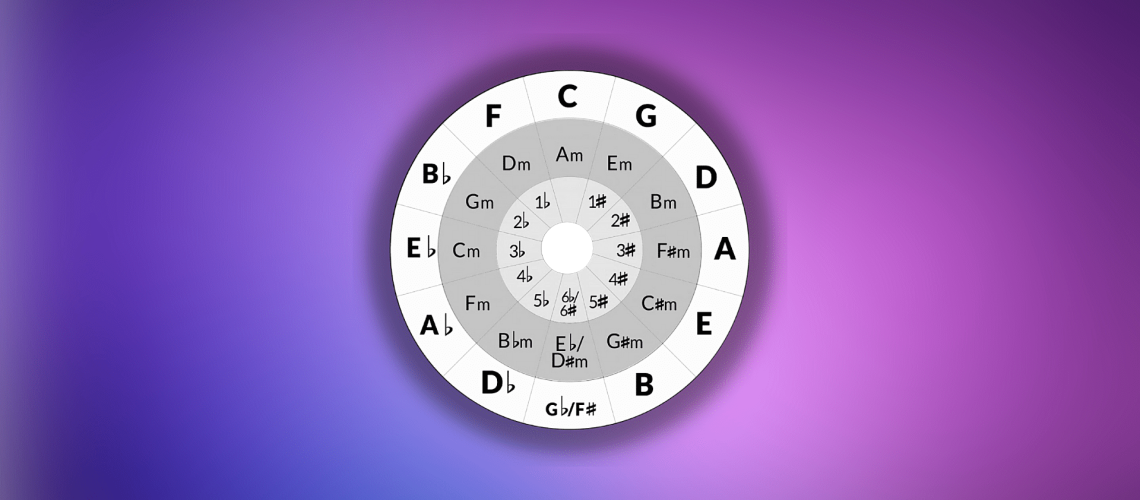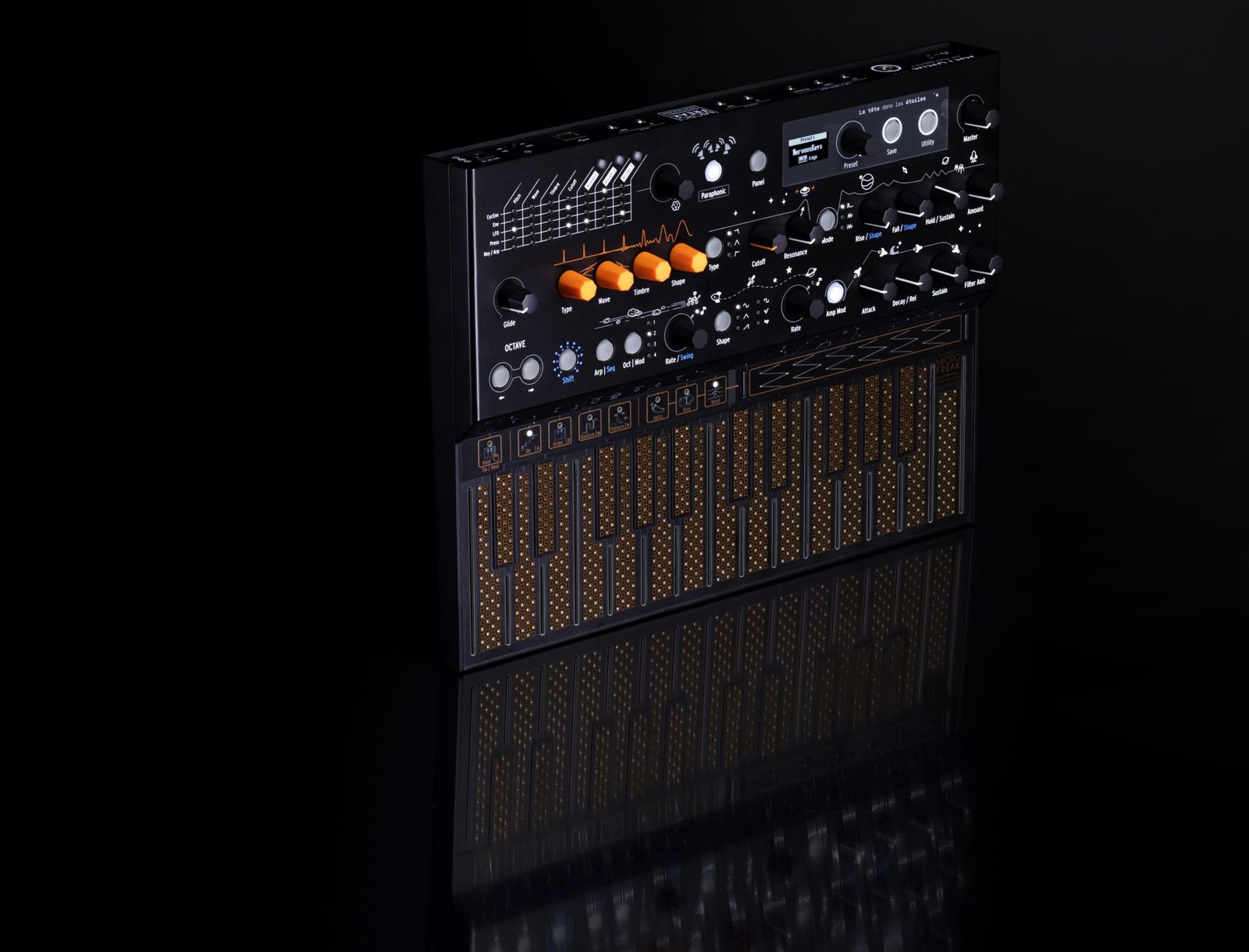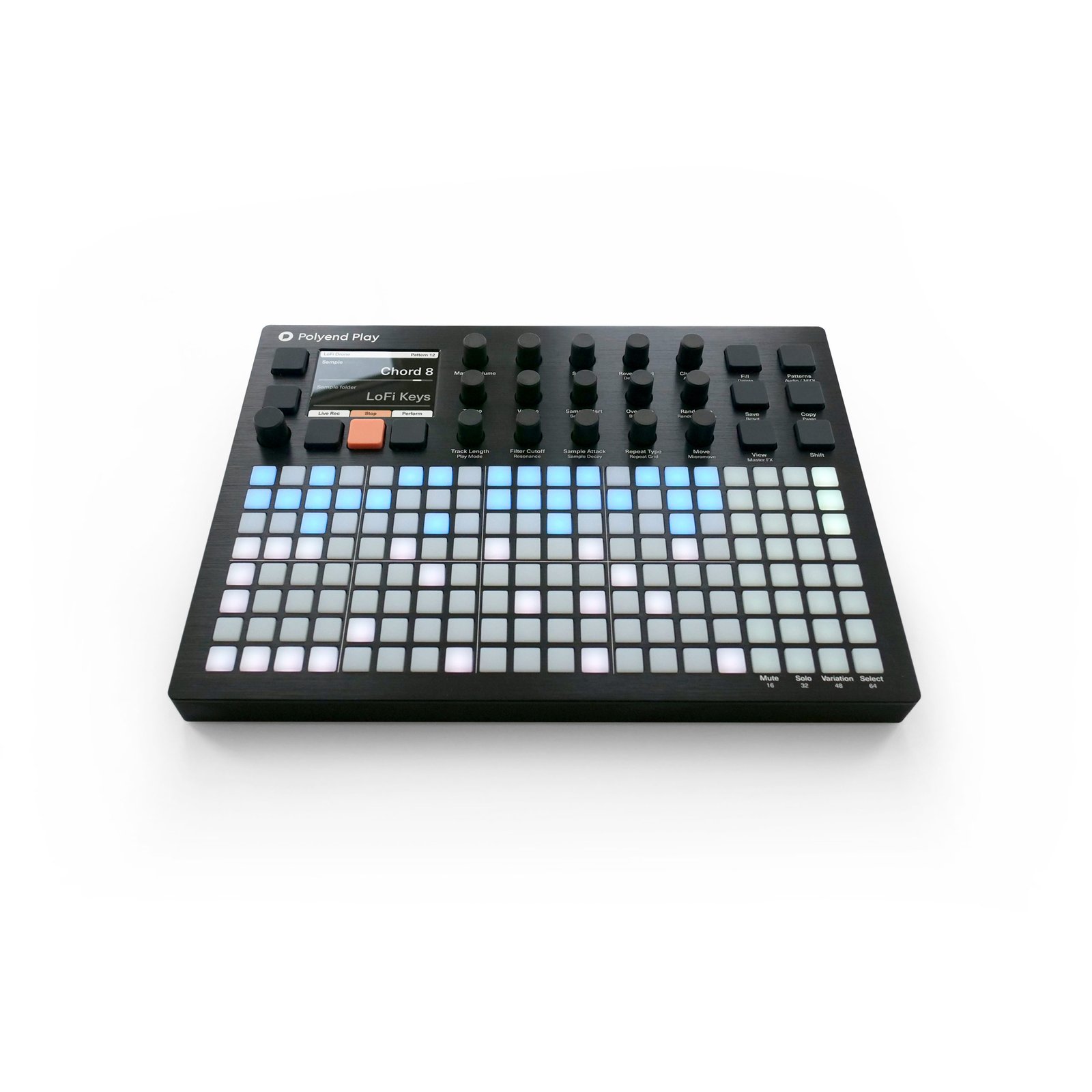The circle of 5ths can sound like a boring topic. Or maybe you think it’s reserved for jazz musicians who need to improvise at every rehearsal.
But the circle of 5ths is actually the most useful tool in music theory.
With a bit of practice, it can help you write melodies and chord progressions much faster. It will give you a deeper understanding of the music your write, and make you a better DJ!
Sound good? Then let’s dive in! Together we’ll look at:
- What the circle of fifths actually is
- A quick reminder of keys, scales, and key signatures
- My favorite tricks to memorize the circle of fifths
- How the circle of 5ths can help you in your production journey
Let’s go! 👇
So What is the Circle of 5ths…? 🧐
The circle of fifths is a way to organize the 12 chromatic pitches in a specific sequence.
As you probably know, contemporary music uses 12 different notes :
C – C# (or Db) – D – D# (or Eb) – E – F – F# (or Gb) – G – G# (or Ab) – A – A# (or Bb) – B
The circle of 5ths is a simple way to organize each corresponding key and key signature. Moving clockwise, each key is separated by a perfect fifth, hence the name!
Every single major and minor key is represented on the circle of fifths:

I know, there’s a lot of information here. But don’t worry – you’ll quickly get the hang of it!
The circle of fifths was developed in the late 1600s. Proposed by a Russian composer, the goal was to teach how to write Western-style compositions.
Nowadays, the circle of 5ths is a fundamental music theory “hack”. Once memorized, you can easily write melodies in any key. You can also improvise chord progressions. Finally, DJs use it all the time to decide which tracks to mix together!
A Quick Music Theory Recap 🎹
But before we explore the circle of fifths, a quick music theory recap.
Firstly, you (hopefully) know that we use 12 different notes in music. If you look at a piano keyboard, the white notes correspond to C – D – E – F – G – A – B:

The symbols “#” and “b” are called “sharps” and “flats”. They mean you have to move up (#) or down (b) one note. For example, F# is the black key right next to F. Ab on the other hand is the black key below A:

Moving from one note to another is called an interval.
For example, moving from C to E requires 4 semitones (or 4 half-steps). This is called a major third.
In our case, we’re just interested in the interval called the perfect fifth. This requires moving up 7 semitones. For example E to B:

The key of a song is the group of notes that form the basis for the composition.
For example, the key of C Major contains the following notes: C – D – E – F – G – A – B.
The key of E Minor contains the following notes: E – F# – G – A – B – C – D
Finally, the key signature is the number of sharps or flats in that key. For example, the key signature of E Minor is just one sharp: F#.
Don’t worry if you didn’t know this. The circle of 5ths will help you remember every key and key signature 😉 And if you need a refresher on music scales, check out our beginner guide here.
Looking to write killer melodies? Check out our latest video:
About Music Notation
Musicians have the bad habit of writing the same thing in different ways. Which can make it really confusing when you start out 😅
Major and minor keys (and chords) can be written in the following ways:
- The note is followed by “Major” or “Minor”, e.g. C Major, E Minor, etc.
- Simply the note in upper-case for a major key or chord, e.g. F or G#
- The note followed by an “m” for a minor key or chord, e.g. Am or Cbm
- More rarely, the note in lower-case will indicate a minor key or chord, e.g. f or cb
Deconstructing the Circle of 5ths 🛠️
Now, let’s look at the outer section of the circle. These are all our major keys because they are written in upper-case:

Starting with C, the next clockwise note is a G. And G is the perfect fifth of C (i.e. 7 semitones). Move to the next note and you have a D: another 7 semitones (i.e. perfect fifth) from G!

This is why we call it the circle of 5ths. Every note is separated from the previous one by a perfect fifth.
Continue adding 7 semitones each time and you’ll complete the entire circle.

Relative Major and Minor Keys
But what about the notes in the inner circle? These are our minor keys:

You’ll notice each letter in the inner circle is followed by an “m”. This means they are minor keys.
Again, the placement of each key is not random. Under each major key is its relative minor key.
For example, Am is the relative minor key of C Major. F#m is the relative minor of A Major etc.
Each major key has a relative minor, and every minor key has a relative major. Their relationship? They share the exact same notes!

For example, the keys of C Major and A Minor share the exact same notes.
How do you quickly find the relative minor or major key? Simply move down 3 semitones:

In this example, B minor is the relative minor key of D Major.
With this trick, we can write every minor key on our circle of fifths:

Starting from Am, you can also move by intervals of fifths to get the next key. For example, moving 7 semitones up from Am gives you Em. Then, moving 7 semitones up from Em gives Bm, etc.
Personally, I find that remembering only the major keys is the easiest. I can always find any minor key with the “down-3-semitones” trick.
And What About the Key Signatures?
Our circle of 5ths wouldn’t be complete without one last thing: the key signatures.
These are written outside the circle:

The key signature tells us how many sharps or flats are in that key. For example, the keys of Bb and Gm both share the same key signature: 2 flats.
As you move clockwise from C, each new key has an additional sharp to its signature.
But as you move counter-clockwise from C, each new key has an additional flat.
The number of sharps always follows the same order:
F – C – G – D – A – E – B

So if your key signature has 3 sharps, those sharps will always be F#, C#, and G#.
The same is true for the flats, with the following order:
B – E – A – D – G – C – F
So if your key signature has 4 flats, those flats will always be Bb – Eb – Ab – Db:

You’ll notice that sharps and flats follow the opposite order:

Useful Tips to Remember the Circle of 5ths
This might seem like a lot to remember. That’s why I want to share with you my personal technique to memorize the circle of fifths.
As mentioned previously, I only memorize the major keys. I know that if I have a minor key, all I have to do is move up 3 semitones to get the major key.
So the first thing is to remember the order of fifths.
To move clockwise on the circle of 5ths, all I remember is that I start on C and then move to G:

To continue the circle of fifths, all I need to do is shift this sequence by 2 semitones:

If you have a MIDI keyboard, this is quite an instinctive back-and-forth pattern. With every step I take, I add a sharp. So for example, E Major is step 4 in this sequence, hence has 4 sharps.
For the anti-clockwise part of the circle of 5ths, I start with C and move down to an F:

I then continue this pattern by moving down 2 semitones each time:

With each step I take, I add a flat. For example, if my track is in Db Major, I need to move 5 steps with this pattern. This means Db Major has 5 flats.
If my track is in a minor key, I simply convert it to its relative major.
Say your track is in Ebm. Move up 3 semitones and you get F# Major. Using the sequence-technique, I need to move up 6 steps from C to get to F#. This means Ebm has 6 sharps.
Remembering The Order of Sharps and Flats
The last thing we need to remember is the order of sharps and flats.
For this, you can use the following sentence:
“Father Charles Goes Down And Ends Battle”
Each word gives you a sharp. Five sharps in your key signature? Easy: F – C – G – D and A!

For the order of flats, simply reverse the sentence:
“Battle Ends And Down Goes Charles the Father”
You’re now ready to tackle any key!
Note: these are just the tricks that I personally use to quickly find the key signature of any key. With time, you’ll simply start remembering by heart the most common key signatures😊
Why Do I Need the Circle of 5ths? 🤷♂️
If you’ve made it this far, congratulations! With a bit of practice, you’ll be able to recall the key signature of any key.
But… why is this useful? When do you actually need the circle of fifths in production? That’s what we’ll explore now 👇
Write Melodies Faster 💨
One of the most essential uses of the circle of fifths is to write melodies.
Of course, this isn’t too much of an issue when you use samples. If I have a track in D minor, I make sure every sample is in D minor. But what happens if I want to write a quick bass line?
How do you know which notes to play? With the circle of 5ths, I can quickly know the key signature of D minor. D minor is the relative minor of F major (3 semitones up):

And F is the first note on the anti-clockwise side of the circle of 5ths. Therefore, D minor has 1 flat, which is a B.
So if my track is in D minor, I can use the notes D, E, F, G, A, Bb, and C. Easy!
Create Beautiful Chord Progressions 🎼
The circle of 5ths also tells us which chords we can play.
Let’s look at an example. We know our track is in E Major, and we want to write a chord progression:

With the circle of 5ths, we can pick from:
- Our “home” chord: in this case E Major
- Both adjacent major chords: B Major and A Major
- The relative minor chord: C# minor
- Both adjacent minor chords: G# minor and F# minor

So if your track is in D minor, you know you can safely use the chords E, A B, G#m, C#m, and F#m. Knowing this makes it super easy to know which chords will sound good in what key!
Looking to dive deeper into the world of chords? Check out this video from Aden:
Harmonic Mixing with the Circle of 5ths 🎧
If you’re an electronic producer like me, chances are you dabble with DJ’ing too.
The circle of fifths is one of the most useful tools to mix harmonically.
This means you are mixing tracks that will blend well together musically. Say your track is in F minor, and you want to transition to another track:

For the most seamless transitions, you can pick from either adjacent keys or the relative major/minor key. So if you’re mixing in Am, your next track should either also be in Am, or in Dm, Em, or C.
In the DJ’ing world, this is commonly referred to as the Camelot Wheel:

This system was developed by Mixed In Key.
Each key follows the exact same placement as the circle of 5ths. However, each major key has been given a number and the letter “B”. On the other hand, each relative minor key has the same number with the letter “A”.
As a DJ, this makes it super fast to transition between tracks.
Without music theory, if your track is in 5A, you can:
- either stay in 5A
- switch to 4A or 6A (the adjacent minor keys)
- switch to 5B (the relative major).
That’s it For This Guide! 🙏
That’s it for now! Hopefully, I’ve made the circle of 5ths easier to digest for you 😁 And inspired you to use it in your daily productions and mixes.
If you’re looking to deepen your music theory knowledge, check out our free Music Theory Cheat Sheet here 🔥
Did I miss out on anything? Let me know over at [email protected]




